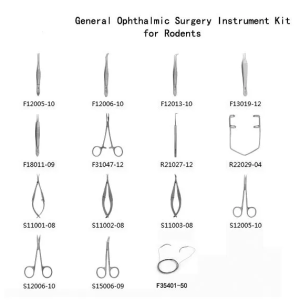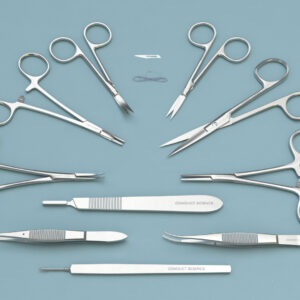$80.00 – $129.00
Broome Rodent Restrainer is one of the most convenient types of restrainer for ease of use as it allows for both hands to be used when injecting the test subject’s caudal vein. Our Broome restrainer is made up of the finest quality acrylic and comes in a variety of sizes. Choosing the right size of the restraint is vital; if the restraint is too large the animal can easily turn around, and if the restraint is too small the animal might not be able to breathe properly.
A broome rodent restrainer is a cylindrical device that is closed on one end. An open groove extends from the opening to the center of the endplate for the adjustment of the nosepiece. On the adjacent side of the open groove, a slit that runs the entire length of the tube aids to get access to the rodent’s tail.
PLEASE ENSURE YOU HAVE THE CORRECT DIAMETER OF RESTRAINER BEFORE PURCHASE.

ConductScience is a company specializing in providing high-quality research equipment, lab supplies, and scientific services for the life sciences community.



SKU | Description | Dimensions |
|---|---|---|
| CS-BRR15-30 | Broome Rodent Restrainer 15 - 30gr | 1’’ diam x 3.375’’ long 2.5cm/1" INTERNAL DIAMETER 3.5cm OUTER DIAMETER |
| CS-BRR30-70 | Broome Rodent Restrainer 30 - 70gr | 1.25’’ diam x 4.5’’ long 3cm/1.18" INTERNAL DIAMETER 4cm OUTER DIAMETER |
| CS-BRR70-125 | Broome Rodent Restrainer 70 - 125gr | 1.5’’ diam x 5.5’’ long 3.81cm/1.5 INTERNAL DIAMETER |
| CS-BRR125-250 | Broome Rodent Restrainer 125 - 250gr | 2’’ INTERNAL DIAMETER x 8’’ long |
| CS-BRR250-500 | Broome Rodent Restrainer 250 - 500gr | 2.5’’ INTERNAL DIAMETER x 8.5’’ long |
Broome Rodent Restrainer is one of the most convenient types of restrainer for ease of use as it allows for both hands to be used when injecting the test subjects’ caudal vein. Our Broome restrainer is made up of the finest quality acrylic and comes in a variety of sizes. Choosing the right size of the restraint is vital; if the restraint is too large the animal can easily turn around, and if the restraint is too small the animal might not be able to breathe properly.
A broome rodent restrainer is a cylindrical device that is closed on one end. An open groove extends from the opening to the center of the endplate for the adjustment of the nosepiece. On the adjacent side of the open groove, a slit that runs the entire length of the tube aids to get access to the rodent’s tail.
Broome Rodent Restrainer is one of the most convenient types of restrainer when the ease of the experiment is in question; the experimenter can use both his/her hand when injecting the caudal vein. Our Broome restrainer is made up of the finest quality acrylic and comes in a variety of sizes. Choosing the right size of the restraint is vital; if the restraint is too large the animal can easily turn around, and if the restraint is too small the animal might not be able to breathe properly.
A broome rodent restrainer is a cylindrical device that is closed on one end. An open groove extends from the opening to the center of the endplate for the adjustment of the nosepiece. On the adjacent side of the open groove, a slit that runs the entire length of the tube aids to get access to the rodent’s tail.
First, the nosepiece should be removed from the body of the Broome-style restrainer by loosening the screw. Position the restrainer so that the slit that runs the entire length of the tube is facing up. Hold the subject by the base of the tail and gently introduce the subject to the restraint device.
Note: Hind limbs should be introduced first. Furthermore, it is always beneficial to place the animal on a smooth surface to expedite its placement into the Broome-style restrainer.
Once the subject is introduced securely, the nosepiece is placed in the groove and tightened so that the open end is sealed. Ideally, the nose of the subject should be projected at the center of the nosepiece. Caution: To avoid suffocation caused to the subject, the nosepiece should not be over-tightened.
Our Broome style restrainer is exceptionally advantageous:

Proper handling and management of experimental animals is an important aspect of various research procedures. Minimal handling, such as cage changing and other noninvasive procedures have been found to cause physiological manifestations of stress in rodents, including elevated heart rate and blood pressure levels (Stewart and Schroeder., 2017). Given that prolonged effects of stress can influence research outcomes, it is imperative that researchers are equipped with the right knowledge, training, and tools for proper animal handling and restraint methods.
The Broome restrainer is one of many types of restraint devices that provide a tightly enclosed fit around the rodent, designed to give access to the tail for intravenous injections. The Broome handler is a cylindrical device that is closed on one end, with an open groove extending from the open end to the center of the endplate for the adjustment of the nosepiece.
A slit runs the entire length of the tube, serving to accommodate the rodent’s tail. Injecting the rodent through the caudal vein usually requires more than one pair of hands to hold the animal down and to secure the area for injection, but the Broome restrainer successfully addresses this commonly-faced difficulty through its novel design. The restraint devices such as the Broome handler are useful for injections and blood sample collection.
The Broome restrainer is a cylindrical, close-fitting restraint device made from fine quality acrylic that comes in different sizes to accommodate different rodent types. The device is transparent and closed on one end, with a slit running the entire length of the tube, giving access to the rodent’s tail. An open groove on the cylinder extends from the opening to the center of the endplate, to fix the adjustable nose piece in place.
Choosing the right size of the restraint is vital; if the restraint is too large the animal can easily turn around, and if the restraint is too small the animal might not be able to breathe properly.
In the usage of a Broome restrainer, it is important to prepare the correctly-sized device for each rodent. An appropriate fit would prevent the animal from fidgeting easily or turning around but is loose enough to allow the animal to breathe properly.
First, the nosepiece should be removed from the body of the Broome-style restrainer by loosening the screw. Position the restrainer so that the slit that runs the entire length of the tube is facing up. Hold the subject by the base of the tail and gently introduce the subject into the restraint device.
Note: Hind limbs should be introduced first. Furthermore, it is always beneficial to place the animal on a smooth surface to expedite its placement into the Broome-style restrainer.
Once the subject is introduced securely, the nosepiece is placed in the groove and tightened so that the open end is sealed. Ideally, the nose of the subject should be projected at the center of the nosepiece. Caution: To avoid suffocation caused to the subject, the nosepiece should not be over-tightened.
The use of the right techniques in the proper handling of mice and rats is a necessity to minimize the effects of stress and discomfort on research outcomes such as fluctuations in physiological parameters. Rigid restraint devices are practical tools that make animal handling easier, safer, and more trouble-free. The Broome style handle, in particular, is designed to provide convenient access to the rodent’s tail for intravenous injections as well as blood sample collection. Modified Broome handlers have found many applications, such as in the monitoring of fetal breathing movements through abdominal ultrasound measurements in rats (Kobayashi et al., 2001), development of rodent models for intraocular pressure fluctuations in patients with glaucoma (Joos et al., 2010), injections through the lateral tail vein (Dorsey et al., 2009), and the regulation of restraint stress (Seifi et al., 2014; Jamieson et al., 2016).
– The Broome restrainer is one of many types of restraint devices that provide a tightly enclosed fit around the rodent, designed to give access to the tail for intravenous injections
– The Broome restrainer is a cylindrical, close-fitting restraint device made from fine quality acrylic that comes in different sizes to accommodate different rodent types
– The device is closed on one end, with an open groove extending from the open end to the center of the endplate for the adjustment of the nosepiece, and a slit runs the entire length of the tube, serving to accommodate the rodent’s tail
– Restraint devices such as the Broome restrainer are useful for injections and blood sample collection
– Choosing the right size of the restraint is vital; if the restraint is too large the animal can easily turn around, and if the restraint is too small the animal might not be able to breathe properly
| Size | 15-30g, 30-70g, 70-125g, 125-250g, 250g.-500g |
|---|
You must be logged in to post a review.
There are no questions yet. Be the first to ask a question about this product.
Monday – Friday
9 AM – 5 PM EST
DISCLAIMER: ConductScience and affiliate products are NOT designed for human consumption, testing, or clinical utilization. They are designed for pre-clinical utilization only. Customers purchasing apparatus for the purposes of scientific research or veterinary care affirm adherence to applicable regulatory bodies for the country in which their research or care is conducted.
Reviews
There are no reviews yet.